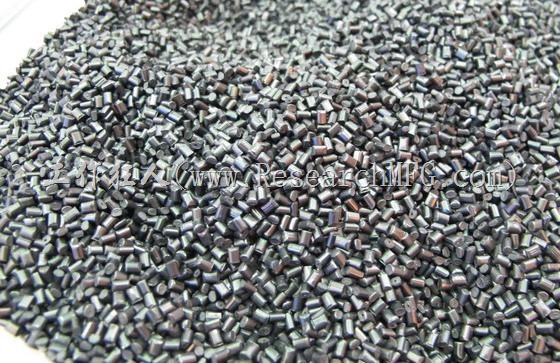
Glass Transition Temperature (Tg) is one of the most important properties of all plastic and epoxy resin materials. In fact, the Tg value is also an indicator of the quality of the fiberglass fabric used in PCB manufacturing. However, compared to Heat Deflection Temperature (HDT), Tg is generally considered less critical. Tg typically refers to the temperature at which the molecular chains of a plastic begin to undergo large-scale motion at the microscopic level.
When the operating temperature is below the Glass Transition Temperature (Tg), the movement of molecular chain segments is mostly frozen, resulting in a more rigid, lattice-like structure. In this state, the plastic exhibits characteristics similar to glass—hard and brittle—known as the glassy state.
When the operating temperature exceeds Tg, the molecular chains gain more freedom to move, causing the plastic to become softer and more flexible, similar to rubber. This state is referred to as the rubbery state. Therefore, the Glass Transition Temperature (Tg) represents the transition point between the glassy and rubbery states.

How Tg Affects Plastic Design and Applications
The Tg temperature has a significant impact on the design and application range of plastic products. In general, solid plastic components are designed to operate at temperatures below Tg. However, for applications that require flexibility—such as rubber materials—the operating temperature is typically set above Tg but still below the Heat Deflection Temperature (HDT).
It’s important to note that the glass transition is not a single, fixed temperature but rather a temperature range. In contrast, HDT refers to a specific temperature point. When defining the Glass Transition Temperature (Tg), it is usually measured as the midpoint of the entire transition range.
Measuring Tg Temperature
The Tg value is typically measured using the Differential Scanning Calorimetry (DSC) method, following the ASTM-E1356 standard. DSC is a thermal analysis technique that records the heating rate required to maintain the same temperature between a sample and a reference material. This data is then used to generate a curve from which the Tg value is determined.

Calculating the Tg Value
Referencing the graph above, as the temperature gradually increases and surpasses the glass transition temperature of a polymer, the baseline of the DSC curve shifts in the endothermic direction. Point A in the graph marks where the baseline starts to deviate. By extending the flat baselines before and after the transition, the vertical distance between these two lines is the step change ΔJ. At ΔJ/2, point C is located. Drawing a tangent from C to intersect the initial baseline at B, the temperature corresponding to B is defined as the glass transition temperature Tg.
However, many people simply use point C as the Tg value since it is easier to calculate. After all, Tg is just a reference temperature, and the difference between points B and C is usually minimal.
The graph below, taken from Wikipedia, shows the DSC curve of PVC. The Tg values calculated using B or C differ by only 0.1°C, demonstrating that the Tg transition appears as just a minor ripple within the entire DSC curve.

Related Posts:
- What is Flexural Strength?
- What is Tensile Strength?
- What is Izod Impact Strength?
- What is CTE (Coefficient of Thermal Expansion)? What is α2-CTE? How Does CTE Affect PCB Quality?








Leave a Reply